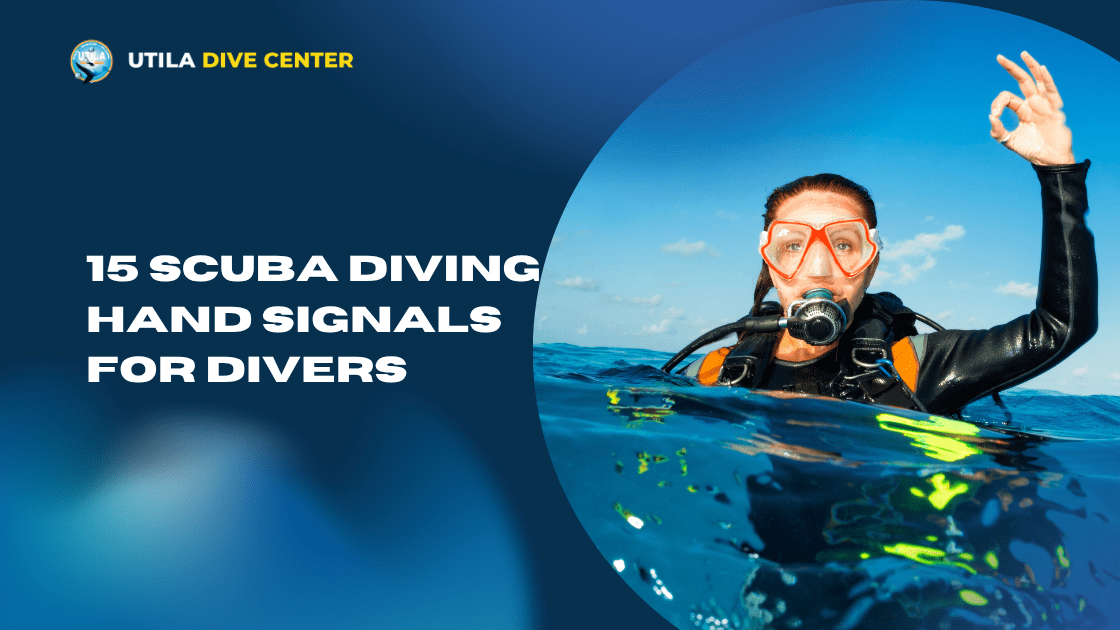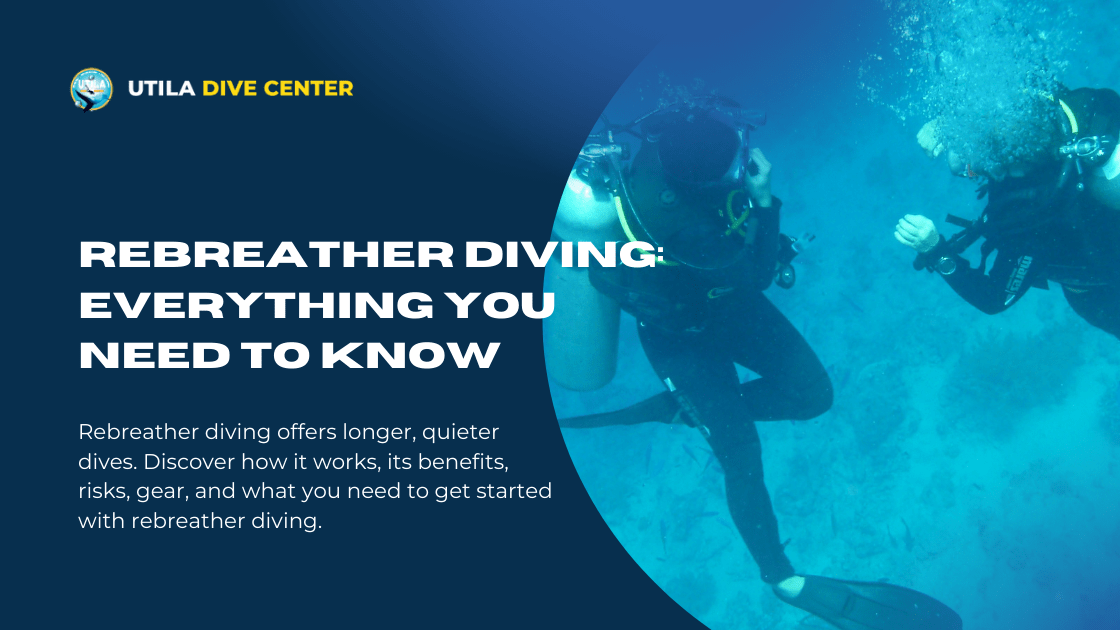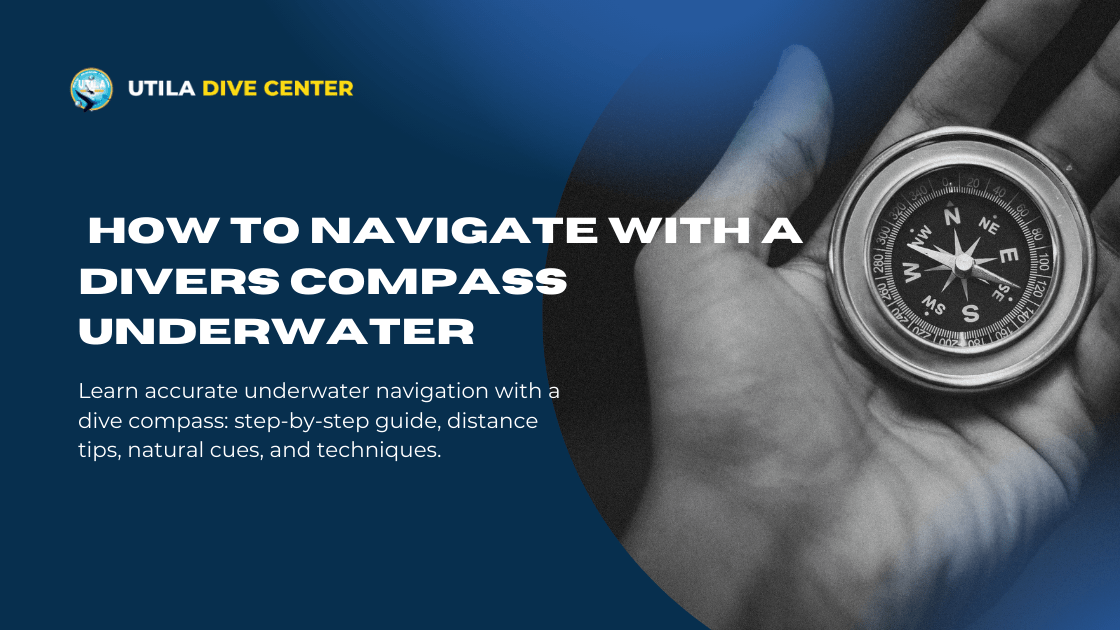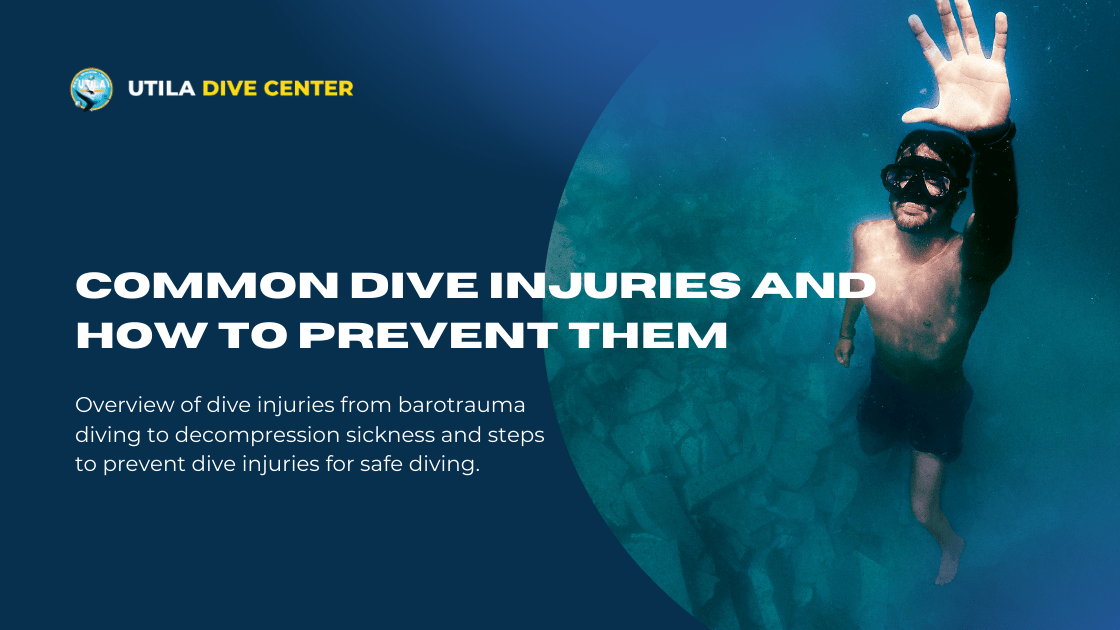
15 SCUBA Diving Hand Signals for Divers
15 SCUBA Diving Hand Signals for Divers
By: Manny Lagos | Date: 2025-07-25T12:56:32.666Z
Picture yourself diving effortlessly in the warm Caribbean waters, surrounded by stunning coral reefs and curious sea turtles. It’s very peaceful until you’re 18 meters deep, something changes and you need to get your dive buddy’s attention.
But you can’t talk underwater, so what do you do? That’s where SCUBA diving hand signals come in.
Whether you’re a beginner starting your diving journey, a PADI Divemaster leading a group, or just enjoying a fun dive with your buddy, knowing the right diving hand signals is essential for everyone.
These simple gestures keep you and your dive partners safe and connected, no matter what happens below the surface.
At Utila Dive Center, we’ve trained thousands of divers, and SCUBA dive signals are one of the first things we teach.
So, if you’re planning to learn SCUBA diving or want to brush up before your next dive trip, below are 15 must-know SCUBA diving hand signals to learn.
15 SCUBA Diving Hand Signals A Diver Should Know:
-
OK Sign
The thumb and index finger touch to make a circle, with the other fingers extended, just like a land-based “OK”.
This is the most universally recognised sign of all PADI hand signals. It asks, “Are you OK?” or says, “I’m OK.” You’ll use this constantly throughout your dive, from signalling your instructor to checking in with your buddy.
-
Not OK / Something’s Wrong
Hold a flat hand out (palm facing down) and tilt it side to side like a seesaw.
This divers signal communicates that something isn’t right. If you’re not feeling well, experiencing equipment malfunction, or just uneasy, use this sign to let your buddy or instructor know.
-
Stop
Hold your hand up, palm out– like a traffic cop saying “stop”.
It’s simple and clear. Use this when you need your buddy to pause or stay still.
It’s often used during training or if there’s a hazard ahead.
-
Go Up / Ascend
Thumb pointing upwards.
This signal means it’s time to ascend, whether to respond to a problem, go to a shallower depth, or end the dive altogether. You can pair it with a slow, upward motion for extra clarity.
-
Go Down / Descend
Thumb pointing downwards.
Use this when starting a dive or moving deeper into the deep blue sea. It’s usually combined with eye contact to make sure your diving buddies are ready before descending together.
-
Come Here
Palm up, fingers motioning inward toward yourself like you’re calling someone over.
This SCUBA dive signal tells your group or buddy to come closer. It’s handy for sharing something interesting you’ve spotted underwater or just regrouping.
-
Level Off / Hold Depth
Flat hand, palm facing down, moving side to side as if patting a tabletop.
This tells your buddy to stop ascending or descending and stay at their current depth. It’s usually used during safety stops or when diving within a particular depth range.
-
Turn Around / Reverse
Point your index finger and move it in a large circular motion.
This means it’s time to turn around and head back! You’ll use this during underwater navigation or when it’s time to return to the entry point as planned.
-
Low on Air
Hold a closed fist to your chest and tap it gently.
This diving hand signal indicates your air supply is getting low (typically around 50 bar / 700 psi). It’s a heads-up to your guide or buddy that you’ll need to start wrapping things up soon.
-
Out of Air
Place a flat hand across your throat.
This is an emergency signal and should always be taken seriously. It means you’re out of air or can’t breathe properly, and you require immediate help.
-
Share Air / Emergency Air
Bring your open hand to your mouth (like holding a regulator), then push it towards your buddy.
This signal tells your dive buddy you need to share their alternate air source. It’s usually used right after the “Out of Air” signal in case of an emergency.
-
How Much Air?
Hold up a flat hand, palm up, and tap the centre with two fingers.
This SCUBA diving hand signal is usually followed by your buddy showing their SPG (Submersible Pressure Gauge). There are actually two ways to signal this: the most common is tapping your gauge with your index and middle fingers, and the other method is to tap the centre of your outstretched palm in the same way.
Both are used to ask, “How much air do you have?”, which helps you monitor your team’s air supply and make quick decisions accordingly.
-
Buddy Signal
Extend two fingers and point them back and forth between you and your dive buddy.
This reminds each other to stay close and keep an eye out. Use it before or during the dive to reinforce team focus and awareness.
-
Cold
Wrap your arms around yourself and shiver dramatically.
This signal is more than just expressive, it communicates that you’re feeling very cold and might want to end the dive or ascend to a warmer depth.
-
Cramp
Point to the affected area (foot or leg) and mimic a squeezing motion.
Cramping is very common, especially during long dives. This PADI hand signal lets your buddy or instructor know you need help stretching or a moment to recover.
Bonus Section:
As a diver, you have to understand that just knowing the hand signals is not enough, being confident enough to use them properly underwater is what really matters.
So, here’s what you can do to get comfortable with your SCUBA diving hand signals before you even dip your toes in the water:
- Practice diving hand signals on land before diving.
Before you dive, take a few minutes to go over all the divers signals with your dive buddy or instructor. This will help build muscle memory and avoid any confusion once you’re underwater.
- Rehearse with your dive instructor.
At Utila Dive Center, we walk you through each signal during training, from your PADI Open Water Diver certification all the way to the Instructor level. Don’t hesitate to ask questions or request a demo. We’d be more than happy to show you the ropes (as many times as you need).
- Keep movements slow and deliberate.
Underwater visibility can vary a lot, so it's important to keep your hand movements slow, deliberate, and easy to read. Quick or jerky movements can be a bit hard to interpret in low visibility.
- Always maintain eye contact when signalling.
Always try to make eye contact when using SCUBA dive signals. It makes sure the person you’re signalling to is paying attention and understands what you’re trying to say.
Conclusion:
Diving in the warm, crystal-clear Caribbean waters is unforgettable, but SCUBA diving takes you to places words can’t reach– quite literally. Down there, SCUBA diving hand signals do all the talking.
These silent, simple gestures are more than just a cool diving skill, they’re the key to teamwork, safety, and making every dive count. When you and your buddy can communicate clearly underwater, the entire experience becomes easier, more relaxed, and way more fun.
At Utila Dive Center, we don’t just teach people how to dive, we train them to become confident, responsible divers who can handle real-life situations with utmost ease and clarity. From your very first dive to becoming a PADI Divemaster or Instructor, we’ll guide you every step of the way.
Ready to dive in and communicate like a pro?
Contact us for a free diving trial.
References:
[1] – Tripsavvy.com - Common hand signals every scuba diver should know
[2] – Dresseldivers.com - Essential scuba diving hand signals for communication underwater
[3] – Blog.padi.com - A guide to scuba diving hand signals
[4] – Scubapro.johnsonoutdoors.com - Scuba hand signals for safe diving communication

Rebreather Diving: Everything You Need to Know
Rebreather diving offers longer, quieter dives. Discover how it works, its benefits, risks, gear, and what you need to get started with rebreather diving.
Read more
12 Rules of Scuba Diving All Divers Must Follow
We've curated a list of 12 rules of scuba diving to help you stay safe, protect marine life, and enjoy your underwater adventures with confidence.
Read more
How to Navigate With a Divers Compass Underwater
Learn accurate underwater navigation with a dive compass: step-by-step guide, distance tips, natural cues, and techniques.
Read more
Common Dive Injuries and How to Prevent Them
Overview of dive injuries from barotrauma diving to decompression sickness and steps to prevent dive injuries for safe diving.
Read more